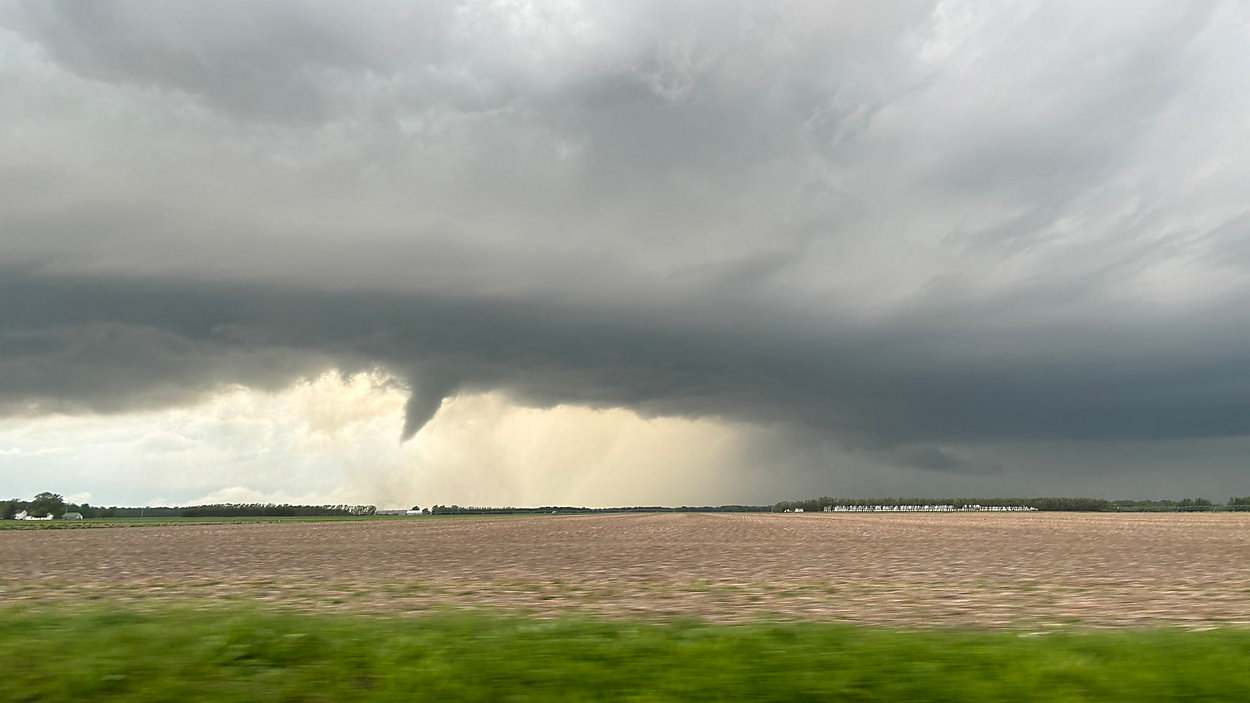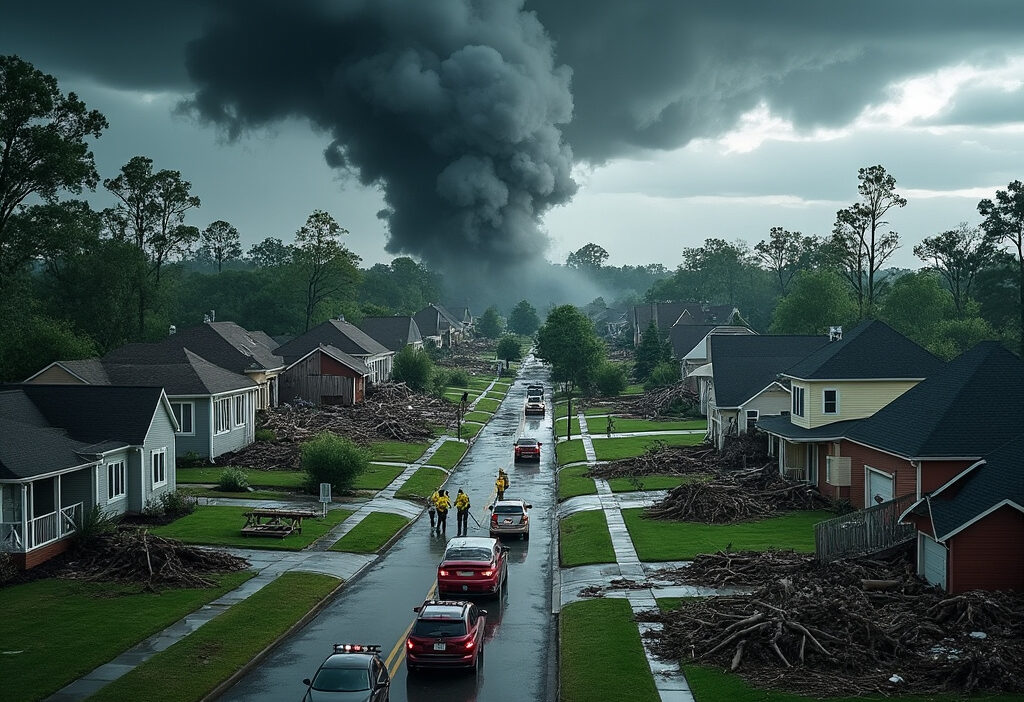Ohio Tornado 2025 A Comprehensive Overview
The Ohio Tornado of 2025 marked a significant event in the history of natural disasters in the United States. This article delves into the meteorological conditions that led to its formation, the devastation it caused, and the lessons learned. Through a detailed exploration, we aim to provide a thorough understanding of this catastrophic event and its implications for future tornado preparedness.
The Meteorological Setup
The Ohio Tornado of 2025 was fueled by a rare convergence of meteorological conditions, with La Niña playing a pivotal role. During the winter of 2024-2025, La Niña strengthened, creating a pronounced jet stream dip over the eastern U.S. This pattern funneled cold Arctic air into the Midwest, clashing with unseasonably warm, moist air from the Gulf of Mexico. The resulting temperature gradient was extreme, with surface dew points exceeding 70°F—unusual for Ohio in early spring.
A strong low-pressure system developed over the Great Plains, intensifying wind shear and instability. CAPE (Convective Available Potential Energy) values surged above 3,500 J/kg, while helicity measurements indicated a high risk of rotating supercells. The dryline advanced rapidly, triggering explosive thunderstorm development.
Additionally, an elevated mixed layer from the Rockies enhanced mid-level lapse rates, further destabilizing the atmosphere. These factors combined to produce a violent, long-track tornado, with the supercell sustaining itself for over 200 miles. The event underscored how climatic anomalies like La Niña can amplify severe weather risks in atypical regions.
The Tornado’s Path and Impact
The Ohio Tornado of 2025 carved a devastating path through the state, leaving a trail of destruction that stretched over 75 miles and impacted multiple communities. The tornado, rated EF-4 with peak winds exceeding 170 mph, first touched down near Dayton before moving northeast, striking towns like Springfield, Marysville, and Delaware. Eyewitnesses described the chaos as “a freight train of debris”, with entire neighborhoods flattened in minutes.
Infrastructure suffered severely, with over 1,500 homes destroyed and critical facilities, including two hospitals and several schools, sustaining heavy damage. Power outages affected 250,000 residents, while downed trees and debris blocked major highways, complicating evacuation and rescue efforts. Environmental impacts were also significant, with thousands of acres of farmland ravaged and local ecosystems disrupted by uprooted trees and contaminated water sources.
Survivors recounted harrowing escapes, like a Springfield family who took shelter in their basement moments before their home was obliterated. Preliminary estimates place the economic toll at $2 billion, underscoring the tornado’s unprecedented ferocity. The disaster set the stage for the massive emergency response detailed in the next chapter.
Emergency Response and Relief Efforts
The 2025 Ohio tornado triggered a swift and multi-layered emergency response, with local first responders arriving within minutes despite widespread debris blocking roads. Search-and-rescue teams, including the Ohio National Guard and FEMA’s Urban Search & Rescue Task Forces, deployed drones with thermal imaging to locate survivors trapped under collapsed structures. Hospitals implemented surge protocols, converting non-critical areas into emergency triage zones to handle over 1,200 injuries.
Coordination challenges emerged due to communication breakdowns—cell towers were damaged, forcing reliance on satellite phones and mesh networks set up by volunteer tech groups. Relief efforts were complicated by gas leaks and downed power lines, delaying access to hardest-hit neighborhoods like Xenia and Springfield. Nonprofits such as the Red Cross partnered with crowdsourced mapping platforms to direct supplies to shelters, while community kitchens fed displaced residents.
Critics noted logistical gaps, including delayed federal aid approvals and shortages of temporary housing. Yet, innovations like AI-powered damage assessment tools helped prioritize rebuilding. The response highlighted both resilience and systemic vulnerabilities, setting the stage for scientific reviews of disaster protocols.
Scientific Analysis and Research
The Ohio Tornado 2025 became a focal point for meteorological research due to its unprecedented intensity and erratic behavior. Post-event analysis revealed wind speeds exceeding 200 mph, classifying it as an EF-5, the highest rating on the Enhanced Fujita scale. Researchers identified a rare multi-vortex structure, where smaller funnels rotated around the main tornado, amplifying destruction. Advanced radar data showed the storm’s rapid formation, with a supercell developing in under 30 minutes—a phenomenon linked to unusually warm Gulf moisture colliding with a strong polar jet stream.
Meteorologists highlighted the tornado’s long-track nature, carving a 50-mile path through urban and rural areas, defying typical dissipation patterns. Soil moisture and terrain were found to play unexpected roles in its persistence. Studies also emphasized the urban heat island effect in Columbus, which may have intensified updrafts. These findings are reshaping tornado prediction models, stressing the need for real-time microclimate monitoring to improve early warnings. The event underscored gaps in understanding high-impact tornadoes in changing climatic conditions, prompting calls for expanded research funding.
Preparedness and Future Implications
The Ohio Tornado of 2025 underscored critical gaps in preparedness, revealing both strengths and vulnerabilities in disaster response systems. Early warning systems proved effective in urban areas, but rural communities faced delays due to outdated infrastructure. Mobile alert penetration was inconsistent, highlighting the need for universal, real-time communication channels.
Key recommendations for future resilience include:
- Upgrading infrastructure to support redundant alert systems, including satellite-based notifications for areas with poor cellular coverage.
- Community drills tailored to high-risk zones, ensuring residents recognize shelter locations and evacuation routes.
- Public-private partnerships to fund storm-resistant construction, particularly for schools and hospitals.
The tornado also exposed disparities in recovery resources. Low-income neighborhoods struggled with prolonged power outages and limited access to emergency aid. Future planning must prioritize equitable resource distribution, ensuring marginalized communities receive timely support.
Finally, integrating AI-driven predictive models—like those developed post-2025—into emergency protocols could enhance response times. By learning from this event, Ohio can transform its approach to tornado resilience, minimizing future devastation.

Conclusions
The Ohio Tornado of 2025 serves as a stark reminder of nature’s power and the importance of preparedness. Through understanding its causes, impacts, and the response it elicited, we can better equip ourselves for future events. This tragedy underscores the need for continued research, community education, and infrastructure resilience to mitigate the effects of such disasters.



